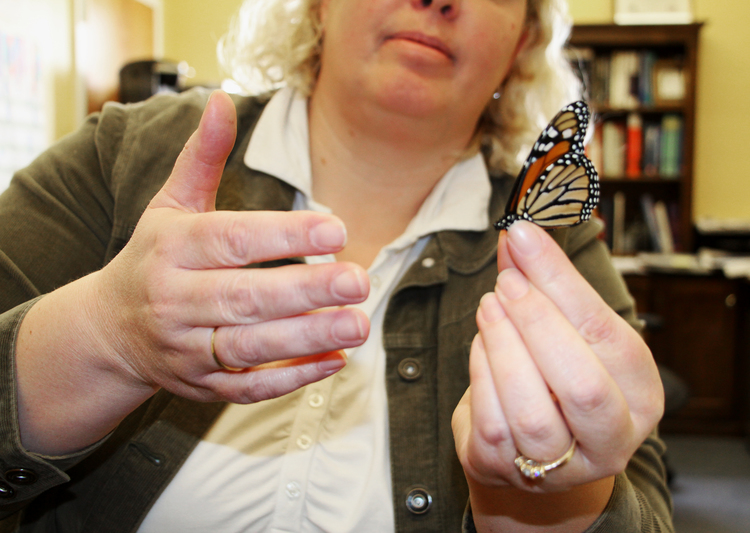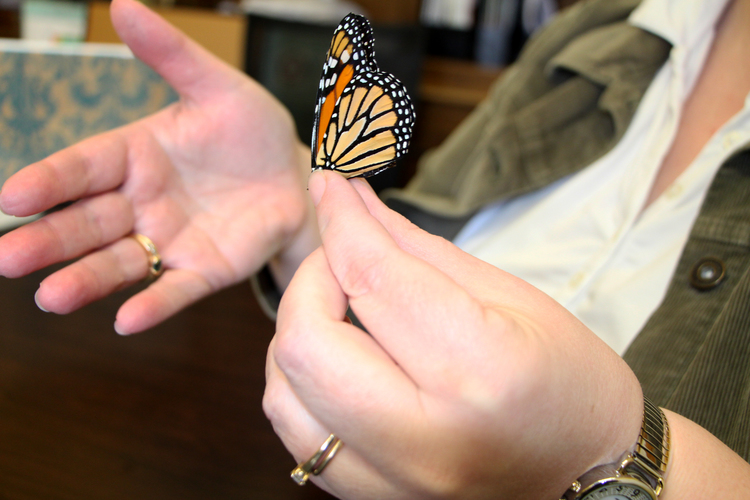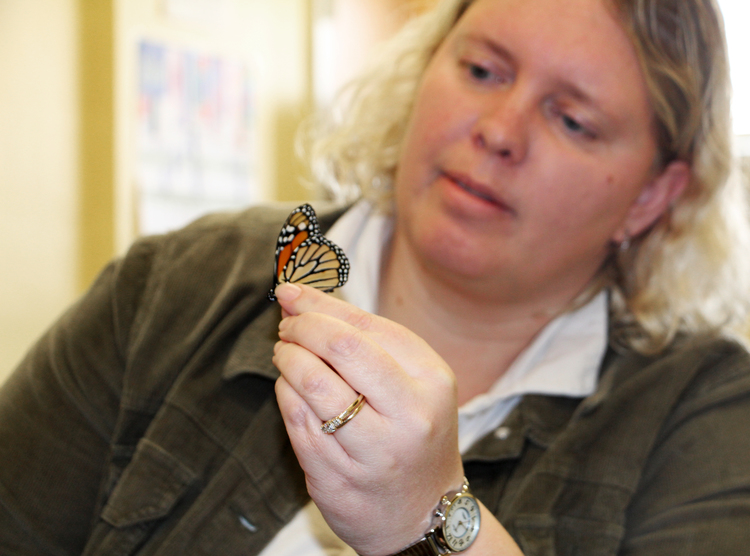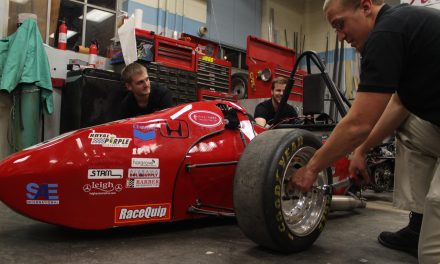STORY AND PHOTOS BY
KELSEY FARMAN
Horsepower allows cars to move faster with more power. Fins allow surfers to maneuver their boards through the water. In the case of a plane crash, passengers evacuate onto the wing. Often, engineers mimic forces in nature to improve the way man-made objects function.
University of Alabama aerospace engineering professor Dr. Amy Lang received two grants from the National Science Foundation to research how the functions of shark and butterfly scales can translate to man-made solutions. Potential applications include more effective helicopter blades, higher quality sporting equipment and an improved fuel economy for cars. She calls this kind of research bio-inspired flow control.
“As engineers, we are looking to nature for inspiration,” she said.
The scales that cover butterfly wings are patterned similarly to roof shingles. Lang said this alters the way that air interacts with surface of the wing, improving the insect’s efficiency in the air.
Butterflies fly slowly, making it more difficult for them to maintain lift. When a butterfly flaps its wings, it creates a vortex, (similar to the force generated when stirring a cup of coffee.) Lang said she believes that the scales help to trap the vortex so that the butterfly does not have to use as much energy to stay lifted.
In a preliminary experiment, Lang and Dr. Nathan Slegers of University of Alabama Huntsville tracked a butterfly’s velocity using infrared video. After, they removed its scales and re-measured the velocity. They found that the butterfly’s wings flapped about 10 percent faster without its scales.
They plan to conduct the same experiment with about twenty more butterflies at a UAH lab this summer. UA mechanical engineering professor Dr. Will Schreiber, biology professor Dr. John Yoder, and computer based honors student Mark Koren are also contributing to the research.
Lang and some of her students have been constructing plates that mimic the pattern of the butterfly scales, using the university’s 3D printer. In a water tank, they are using the plates to study vortex formation.
In addition to their research on butterflies, Lang and her colleagues are also tracking the way shark scales interact with fluid in a water tunnel. They use real scales for these experiments.
Shark scales serve a similar function as the dimples on a golf ball. Both help eliminate drag. This allows the ball to fly farther and the shark to move easier through the water.
Lang has separate patents pending for the shark scales and the butterfly scales. One application for the shark scales would be bike-racing equipment that utilizes this scale pattern to eliminate drag, therefore increasing speed with less effort. Another is man-made tape that mimics the shark scale pattern that could be stuck on helicopter blades to better control flow separation.
The applications of the butterfly research are not as clear, but Lang said that this knowledge of the scales could potentially be used to build micro-area vehicles (MAVs). She said that the Air Force and the Army are interested in building small vehicles that mimic insect flight.
“It would be the proverbial ‘fly on the wall’ sort of scenario,” Lang said.
These MAVs also could be used in other scenarios, such as search and rescue operations.
Lang said that the power requirement is a big limitation on building MAVS. The butterfly, she said, interacts with air in a way that allows it to fly more easily with less energy. She and the other researchers are working to understand this process in order to find the potential applications.
“Can we eventually build a little robot that flies around like an insect?” she said. “Nature can do it, but we still can’t.”










